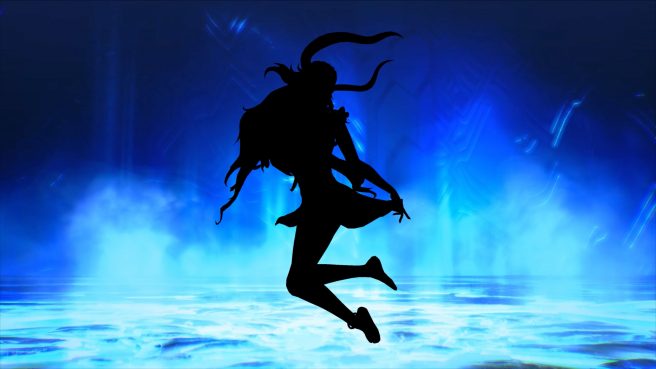Shin Megami Tensei V daily demon vol. 203 – Ishtar
With Shin Megami Tensei V arriving this Friday, Atlus has continued its due diligence in releasing daily highlight videos for each of the upcoming game’s demons. This latest video showcases Ishtar, check it out with some additional history details below.
Here is some of the history behind Ishtar, courtesy of the Megami Tensei wiki:
Ishtar is the Akkadian (and thus later Babylonian and Assyrian) equivalent of the Sumerian goddess Inanna and shares her roles as a goddess of love, war and fertility. Like Inanna, she wasn’t considered a mother goddess, and few, if any, texts name any gods as her children. She is known as the “Queen of Heaven” and is the personification of the morning star (Venus). Her father is usually said to be Sin, the moon god, and she forms an astral trinity with him and her twin brother Shamash, the sun god. Other texts sometimes refer to Anu, Enlil or Ea (Enki) as her father. She is also known as the “Lady of Battles” because of her violent and warlike character. Her holy city was Uruk (or Erech). Part of her cult was thought to be devoted to temple prostitution, though despite Ishtar’s sexual character, some modern researchers question this claim or the scope of such practices. Her symbols were the eight pointed star (originally simply a Mesopotamian symbol of heaven, but in later times only of the morning star), the lion and the dove. Like most Mesopotamian gods, art often depicts her wearing a horned crown, a symbol of divinity. She was commonly depicted as winged.
According to one of her most prominent myths, Ishtar’s sister is Ereshkigal, the goddess of the underworld. When Ishtar descended to the netherworld, Ereshkihgal cursed her, trapping her among the dead. With Ishtar dead, the earth withered and would not produce, and neither animals nor human beings would bear young. With great effort, the water god Ea used magic to revive Ishtar, which displeased Ereshkigal. She demanded to trade her sister for someone else, finally deciding that Ishtar’s husband Tammuz would replace her.
The epic of Gilgamesh states she had many lovers, but all were fated to be killed or turned into animals at her hands (Tammuz is described as turned into a bird with a broken wing rather than imprisoned in Ereshkigal’s realm). When Gilgamesh had rejected her advances, she sent the Bull of Heaven, a sacred beast of the god Anu, to combat him. After he managed to vanquish the bull with the help of his companion, the wild man Enkidu, the gods decided to kill the latter to punish the pair for this transgression.
The historical King Sargon of Akkad was closely assciated with Ishtar. According to an epic poem about Sargon’s exploits, she guided him to victory against his enemies, lead by the tyrannical ruler Nur-Dagan of Purushanda, who was advised by Enlil. Later Assyrian legends claim Sargon was born as an illegitimate son of a priestess and worked as a gardener before Ishtar decided to bestow kingship upon him. In his documents, Sargon frequently attributed his successes to Inanna/Ishtar, and his daughter Enheduanna wrote many hymns to this goddess.
Due to Ishtar’s popularity, many cultures in contact with Mesopotamia either adopted her into their pantheons or conflated her with their local goddesses. The Canaanite goddess Astarte was her western counterpart, while Hittites and Hurrians sometimes used Ishtar’s name to refer to their own war goddess, Shaushka.
Shin Megami Tensei V is scheduled to arrive on Switch on November 12. Earlier coverage, including all previous daily demon videos, can be found here.
